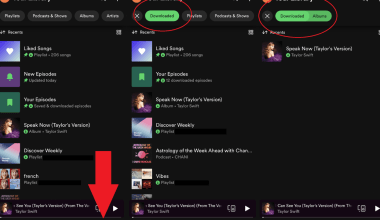Creating a music video is an exciting way to bring your song to life. Whether you’re an artist, producer, or director, knowing how to make a music video can elevate your work and help you connect with audiences visually. Music videos have the power to tell stories, enhance your brand, and boost your music’s popularity. This guide will walk you through the entire process, from planning to final production, ensuring your video makes an impact.
Why Make a Music Video?
Before diving into how to make a music video, it’s essential to understand why they matter. Music videos:
- Enhance Your Song’s Appeal: Adding visuals makes your music more engaging.
- Boost Online Presence: Videos perform well on platforms like YouTube, Instagram, and TikTok.
- Tell a Story: A video can express the emotions or message behind your song.
- Expand Your Reach: Creative videos can go viral, attracting a broader audience.
Steps to Make a Music Video
Step 1: Define Your Concept
Every great music video starts with a clear concept. Decide what story, mood, or message you want to convey. Consider:
- Theme: Is it a love story, party vibe, or abstract art?
- Visual Style: Do you prefer cinematic, minimalistic, or colorful visuals?
- Tone: Should the video feel upbeat, emotional, or edgy?
Brainstorm ideas and ensure your concept aligns with the song’s lyrics and mood.
Step 2: Plan Your Budget
Knowing how to make a music video includes understanding your financial limits. Music videos can be made on any budget, whether it’s $500 or $50,000. Factors to consider:
- Equipment rental
- Location fees
- Crew wages
- Props and costumes
- Post-production costs
Stick to your budget, but don’t compromise on creativity.
Step 3: Write a Script and Storyboard
Create a script that outlines the flow of your video. A storyboard is equally important—it visually maps out each scene. This step is crucial in ensuring that your team understands the vision.
- Script: Write dialogue, if any, and describe actions.
- Storyboard: Sketch out each shot, noting angles, movements, and transitions.
Step 4: Choose Your Team
You’ll need a reliable team to help execute your vision. Key roles include:
- Director: Oversees the creative aspects.
- Cinematographer: Manages camera work.
- Editor: Handles post-production.
- Actors/Dancers: If required, cast people to perform in your video.
Collaborate with professionals or enthusiastic friends who share your vision.
Step 5: Scout Locations
The right location can bring your video to life. Consider:
- Aesthetic Appeal: Does the location match your theme?
- Practicality: Is it accessible and within budget?
- Permissions: Obtain permits for public or restricted areas.
From urban rooftops to serene forests, your choice of location impacts the video’s overall look.
Step 6: Gather Equipment
High-quality equipment makes a significant difference. Essentials include:
- Cameras: DSLRs, mirrorless cameras, or even smartphones for budget projects.
- Lighting: Ring lights, softboxes, and reflectors for proper illumination.
- Audio Gear: Use playback speakers for lip-sync accuracy.
- Tripods and Gimbals: For steady shots and smooth movements.
If you don’t own equipment, consider renting or borrowing.
Step 7: Shoot the Video
This is the most exciting part of learning how to make a music video. During the shoot:
- Stick to your storyboard but stay flexible for creative improvisation.
- Pay attention to lighting, framing, and timing.
- Take multiple shots for safety.
- Use playback to synchronize the performance with the music.
Step 8: Edit Your Video
Post-production brings your footage to life. Use professional software like Adobe Premiere Pro, Final Cut Pro, or DaVinci Resolve.
- Sync Audio and Video: Ensure the visuals match the music perfectly.
- Add Effects: Enhance your video with color grading, transitions, and special effects.
- Incorporate Titles: Include text for credits or song titles, if necessary.
Keep the editing style consistent with your video’s theme.
Tips for Making a Music Video Stand Out
1. Use Creative Angles
Experiment with unique camera angles and movements to keep your video dynamic.
2. Focus on Storytelling
Even abstract videos can convey emotions or narratives. Keep the audience engaged with a compelling story.
Crop or edit your video for platforms like Instagram (9:16) or YouTube (16:9).
4. Add Visual Effects
Subtle effects can elevate your video’s quality without overshadowing the content.
Common Mistakes to Avoid
- Skipping Pre-Production: Without planning, your shoot may feel chaotic.
- Ignoring Lighting: Poor lighting can ruin even the best footage.
- Overcomplicating: Keep your concept simple but impactful.
- Neglecting Audio Sync: Ensure your visuals match the song perfectly.
Promoting Your Music Video
Once your video is complete, share it effectively:
- Upload on YouTube: Optimize your title, description, and tags.
- Share on Social Media: Post teasers and behind-the-scenes clips.
- Collaborate with Influencers: Partner with creators to expand your reach.
- Engage with Your Audience: Respond to comments and encourage sharing.
Conclusion
Learning how to make a music video is a rewarding journey that combines creativity, technical skills, and teamwork. From planning and shooting to editing and promoting, every step is an opportunity to express your artistry.
Whether you’re working with a tight budget or a full production team, the key to success lies in clear vision and dedication. Start creating your music video today and watch your music reach new heights.
Related Articles:
For further reading, explore these related articles:
- Spotify Videos on Songs: Transform Your Listening Experience
- Save Instagram Videos with Music: Simple and Detailed Guide
For additional resources on music marketing and distribution, visit Deliver My Tune.






